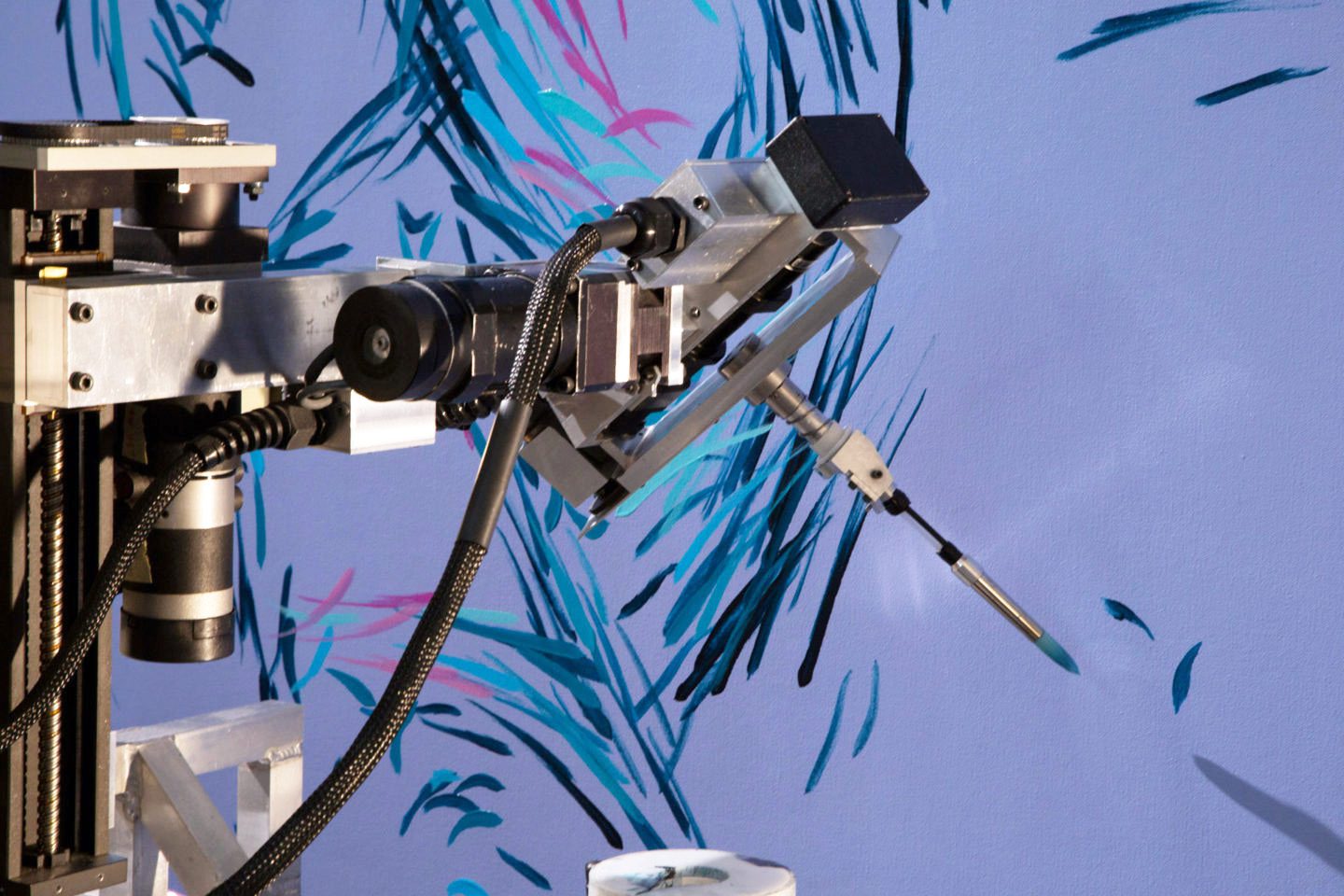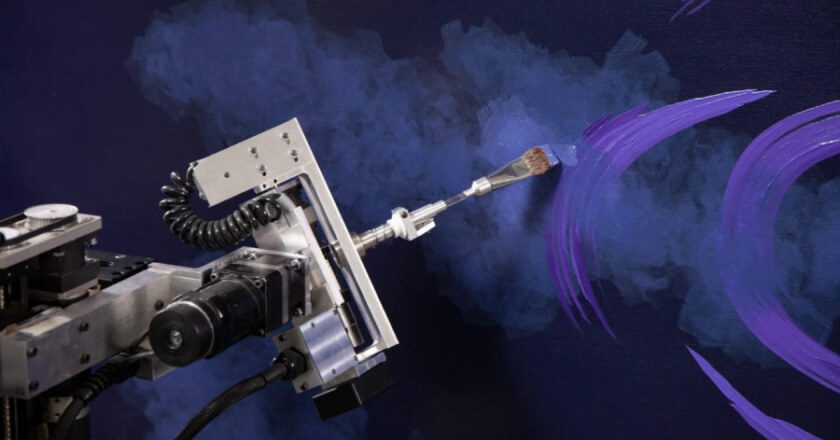Get Inspired
Build the life you love. Learn more about fusioneering:

Posted on November 15, 2022 in AI Technology
Futuristic robots aren’t just fiction anymore; they’re a reality. Autonomous machines are advancing every sector of our society, and some of the developments in modern robotics technology may surprise you. While we haven’t quite reached the level of full android assistants… we’re not too far off.
Take a look at four incredible modern robots making waves in the world.
Related: See What it Takes to Make a Robot that Paints
Boston Dynamics has long been an impressive innovator in the robotics space. In 2005, along with Foster-Miller, the NASA Jet Propulsion Laboratory, and the Harvard University Concord Field Station, Boston Dynamics created a robotic “pack mule” designed to be “the world’s most ambitious legged robot.” This robot was called “BigDog.” The quadrupedal robot was made to be able to transport supplies over difficult terrain and contains incredible features such as stereo vision, laser gyroscopic stabilization, and leg sensors capable of determining things like joint position, pressure, and level of ground contact. BigDog is roughly the size of a small mule and has approximately 50 sensors that allow it to intake important information about its environment. The robot controls its movement with an onboard computer, and is able to carry 340 lbs, run four miles an hour, cross ice, crawl, trot, and can even maintain its balance after being kicked.
After developing other dog-like quadrupedal robots, in 2016, Boston Dynamics released a newer, smaller, more quiet version for commercial production. This 55 lb robot is known as “Spot,” and is available to purchase for roughly $78,000, with custom development capabilities to serve different industries. So far, some of the tasks Spot units have been involved in include hazardous waste handling, cheerleading, and beer dispensing.
Healthcare has a new helping hand, courtesy of the scientists from RIKEN and Sumitomo Riko Company Limited. Introducing ROBEAR, a cute and friendly robot bear designed to assist with nursing care. Caregivers in nursing facilities deal with a number of strenuous and potentially damaging tasks, such as lifting patients from beds into wheelchairs or helping patients to stand. Individual caregivers are expected to lift patients an average of 40 times per day. ROBEAR has been created to alleviate the burden on caregivers and is made to lift patients with comfort and ease. The robot bear is designed to “exert force in a gentle way,” and incorporates sensors made entirely from rubber and actuator motors with very low gear ratios to move patients in a gentle and sensitive manner. ROBEAR also has a friendly and inviting cartoon bear’s face to put patients at ease.
Wondering when robots are going to start delivering your packages or food? In January 2022, robot manufacturer Starship’s autonomous delivery robots already completed more than 2.5 million deliveries worldwide. Starship’s robots look somewhat like coolers with wheels, and the 55 lb machines can carry 20 lbs of goods within their storage containers. The robots are used for short-range deliveries and travel on sidewalks at pedestrian speeds. Users of the service must unlock the robot by the app after using biometric authentication to verify their identity. Starship’s food delivery robots operate using an array of sensors akin to what self-driving cars utilize, and each unit’s roughly 18 hour battery life is powered entirely by zero carbon electricity. According to a study conducted in Milton Keynes, the Starship delivery fleet eliminated 280,000 automobile journeys in the city and saved 137 tons of CO2 in just a three-and-a-half year period.
ASIMO is a robot created by Honda in 2000, and a project they’d been working on since the 1980s. ASIMO stands for Advanced Step in Innovative Mobility and is also an honorary nod to science-fiction writer Isaac Asimov. ASIMO is one of the most impressive humanoid robots ever developed and features a wide range of abilities. The bipedal creation can run, jump, walk backward, and traverse obstacles. It can also use its camera “eyes” to recognize objects, movements, gestures, faces, and even subtle expressions. The robot is able to understand human voices and gestures and respond appropriately. ASIMO can wave to people that wave at it, shake hands, nod to show that it’s listening, and will physically and verbally respond to conversation. All of ASIMO’s movements and responses are autonomous – and the robot can even predict what a human will do next. For example, ASIMO’s predictive algorithms allow it to predict where a person will move in order to assist the robot in not bumping into someone while walking beside them.
In 2018, Honda announced they were ceasing commercial development of the ASIMO program to focus on other applications of the technologies ASIMO helped produce. Today, ASIMO makes frequent public appearances, is still used as a research platform, and has earned a position of cultural celebrity in Japan as well as internationally.
Looking for more information on the power of robotics and AI? Take a journey into the history of artificial intelligence. Want to see a man undertake the incredible task of creating a modern robot with AI that can paint? Watch the film of Paul Kirby’s journey, nominated for Best Short Film at the 2021 Vail Film Festival. And for all things at the intersection of science and art and to learn about inspirational people, follow us on Instagram, Facebook, and join our mailing list!
Are you interested in hearing the complete story of Paul and Dulcinea? Watch the video (nominated for Best Short Film at the 2021 Vail and Portland Film Festivals) for more info.
Want to be the first to know about every exciting new project at the Kirby Foundation?
Join Our Mailing ListBuild the life you love. Learn more about fusioneering:
Why pick which passion you should follow? Fusioneering allows you to cultivate many interests into something innovative and revolutionary.

Meet Paul and explore how blending your interests can empower you to follow your enthusiasm and bring your passions to life.